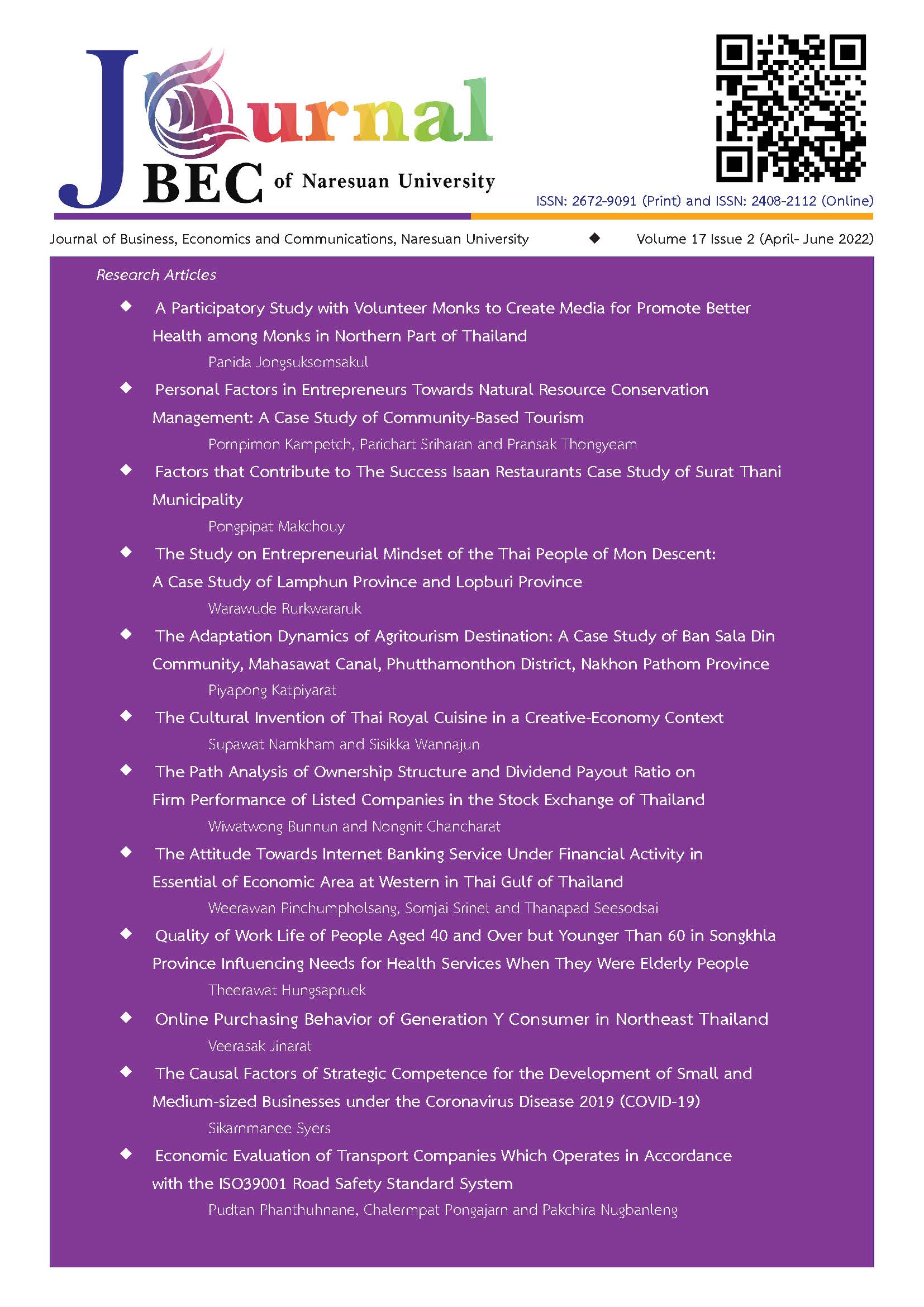A Participatory Study with Volunteer Monks to Create Media for Promote Better Health among Monks in Northern Part of Thailand
Main Article Content
บทคัดย่อ
The situation of monks’ well-being in the northern part of Thailand was affected by changes and medical conditions resulted due to an unhealthy diet. Not all of them have an understanding of health literacy and a sense of well-being. This paper is part of the innovative development research project in the management of Buddhist monks’ health promotion with monk health volunteers (Phra Kilanuphatthak). This was done to collect quantitative data from the monks’ self-health management problem survey in 11 Northern provinces. The scope of the area based on trained Phra Kilanuphatthak. This paper presents the problems and potential of Phra Kilanuphatthak in health promotion management. Then created a process of participation in creating and communicating to advocate monks’ health media.
The research results initiated the development of innovative media from the community and novices are well versed in music and lyrics composed by a Thai teacher and sung by Thai singers. Doctors and pharmacists are interviewed to raise awareness of the health problems experienced by monks who are in remote areas and Phra Kilanuphatthak’s guideline to promote awareness and to prevent the top ten diseases experienced by monks and community people. The research result found that they are in good level from the evaluation of the community and monks. In addition, the hypothesis testing results showed that Phra Kilanuphatthak had different developing skills for health promotion before and after his involvement in media creation significance.
Article Details

อนุญาตภายใต้เงื่อนไข Creative Commons Attribution-NonCommercial-NoDerivatives 4.0 International License.
เอกสารอ้างอิง
Altman, G. D. (1994). Public Health Advocacy creating community change to improve health. Standford: Standford Center for Research in Disease Prevention in cooperation with The Kaiser Family Foundation.
Amidei, N. (1991). So you want to make a difference: Advocacy is the key. In Wallack, L., et al.. Media Advocacy and Public Health, Power for Prevention (pp.28-29). London: SAGE Publications
Bureau of Elderly Health, Department of Health. (2018). Health Monk Volunteers Training Report on May to July 2018. Nonthaburi: Bureau of Elderly Health, Department of Health, Public Health Ministry.
Chiang Mai Provincial Public Health Office. (2011). Report from the Chiang Mai Provincial Public Health Office. Chiang Mai: Office.
Chapman, S. (1997). Media Advocacy for Public Health. World Health, 55(6), 28.
Chatchawarat, P. (2010). Factors Affecting Health Behaviors of Monks in Amphoe Mueang Payao Province. Phayao: Boromarajonani College of Nursing.
Chitanondh, H. (2001). Defeat in Trade -Victory in Health. Bangkok: Desire Co.,Ltd.
Health Promotion Agency. (2018). Annual Report 2018, Health Promotion Agency (Thai Health Promotion Agency), Bangkok: Office of the Health Promotion Foundation (Thai Health Promotion Foundation).
Hilt. (1984). 6 1/2 -year boycott of Nestle' is ended as firm adopts baby formula code. In Wallack, L et al., Media Advocacy and Public Health, Power for Prevention. (pp. 30-31) London: SAGE Publications.
Phrakruyanapetcharat, T. (2014). Approach Strategies of Buddhist Propagation. Journal of MCU Peace Studies, 2(2), 80-93.
Pinitta J. (2022). Long life Lae music - Tossapol Himmapan. Retrieved February 14, 2022, from https://youtu.be/xsBh5L_CYOg
Pinitta J. (2022). Too-Ya-Online - Medicine Cupboard. Retrieved May 3, 2022, from https://youtube.com/playlist?list=PLw5C5xGxuBf9ZBowd03m2wYs_kWW8u5ZX
Purakom, A., Sriprom, S. and Kanleung. (2018). Develop Holistic Physical Activity Learning Curriculum for Older Adults. Veridian E-Journal,Silpakorn University (Humanities, Social Sciences and arts), 11(3), 2013-2030.
Rakkanto, S., Kongkhuntod, A. and Kanchana, S. (2008). Behaviors of Self-Care of Monks in the Upper Southern Region. Phra Nakhon Si Ayutthaya: Mahachulalongkornrajavidyalaya University.
Rerkluenrit, J., et al. (2010). Factors Predicting Health-Promoting Behaviors among Buddhist Monks in Nakhonnayok Province, Thailand, Thai Pharmaceutical and Health Science Journal. 5(4), 333-343.
Silamad, S. (2014). Physical Activities for Wellness. Bangkok: Chulalongkorn University Press.
Supankul, P. (2014). Factors Predicting Glycemic Control Behaviors Among Monks with Type 2 Diabetes in the Upper Northern Region. Journal of EAU HERITAGE, 8(2), 259-269.
Supawongse, C., Buasai, S., Thanapathara, J., and World Health Organization. (1999). The Evolution of tobacco control in Thailand. Nonthaburi: Cyber Press Co., Ltd.
Thamjaiboon, M. (2017). The Self-Care Management of Buddha Monks with Type 2 Diabetes Mellitus at Diabetes Clinic in Priest Hospital. Journal of the department of medical services, 42(2), 68-75.
Thammachot, R. (2014). Study on the relationship between testosterone levels and health problems of elderly men in monk patients Monk Hospital. Journal of Medical Department, 39(3), 211-217.
Thunsatian, P. (2007). Quality of LifeAming Thai Buddhism Monks With Chronic Illnesses at Priest Hospital. Master thesis, M.A., Gradute School Mahidol University, Nakornpathom.
Wallack, L. and Dorfman, L. (1996). Media advocacy: A Strategy for Advancing Policy and Promoting Health. Health Education Quarterly, 3(23), 293-317.
Wallack, L., Dorfman, L., Jernigan, D., and Themba-Nixon, M. (1993). Media Advocacy and Public Health, Power for Prevention. London: SAGE Publications.
Wanitbuncha, K. (2001). Statistic Analytical Technic for Research and Administration (13th ed.). Bangkok: Chulalongkorn University Printing House.


